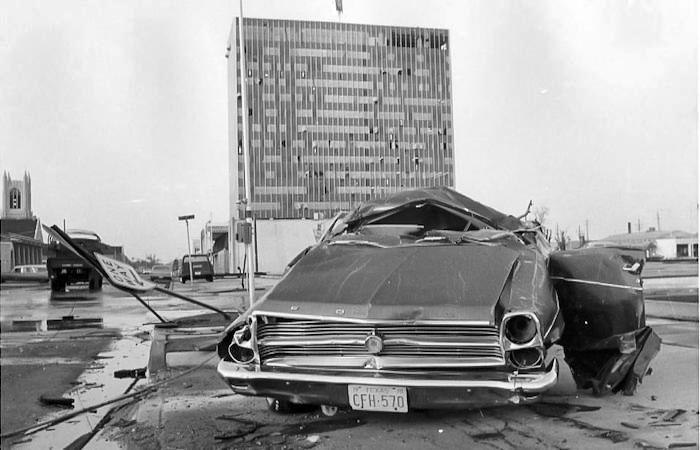Lessons From The Lubbock Tornado — 50th Anniversary of The Big Tornado

May 11, 2020 marked the 50th anniversary of an F-5 tornado that struck Lubbock, Texas. That infamous Monday evening changed tornado science forever—and for the better. Unfortunately, more than two dozen people died during the 1970 tornado and storm. However, damage surveys conducted by Professor Ted Fujita have taught us many important things that have since saved hundreds, if not thousands, of lives.
So, who was Ted Fujita?
Fujita is considered the “father” of modern tornado research. As a young man in Japan, he helped map damage patterns from the atomic bombings of Hiroshima and Nagasaki. After the war, he joined the faculty of the University of Chicago where he combined his knowledge of wind and blast damage with his fascination for tornadoes.
The 0-to-5 Fujita Damage Scale, now known as the “F Scale”, allows us to categorize weak, strong, and violent tornadoes based upon the amount of wind damage they do. In 1971, he rated the Lubbock tornado F-5, the strongest possible. Here’s a breakdown of what Fujita and the Lubbock tornado have taught us.
#1) Lubbock Tornado & Wind Damage Tracking
Fujita studied tornadoes in the laboratory, like his tornado machine pictured above. But, he learned more by doing detailed damage surveys on foot and by air. Specifically, he would document the path and the damage of every tornado he could. There were actually two tornadoes in Lubbock that fateful night. And it was the stronger and longer-tracked twister that tore directly through downtown. Fujita not only drew the track of the tornadoes, he also carefully noted the wind damage patterns in and near the path. This process illustrated how the wind is sucked into, and around the funnel cloud.
#2) Mini Tornadoes Exist Within Larger Tornadoes
Fujita proved that large tornadoes sometimes have mini-tornadoes that circulate inside of them. Fujita called these smaller rotations “suction spots”. Plus, he also correctly attributed the strongest damage to these mini-circulations, which rotate within the parent tornado. Ultimately, he showed that a suction spot spinning at 50 mph, inside of a 150 mph tornado, produces even more damage. Specifically, in this example, those suction spots actually have 200 mph winds (50mph + 100mph), which can easily annihilate homes.
#3) Deaths Caused by a Sub-Vortex in Lubbock Tornado
Fujita also correlated many of the deaths in the Lubbock tornado to victims being unlucky enough to get caught in the path of one of the suction spots. We now refer to a suction spot as a “sub-vortex”. Additionally, strong tornadoes that feature these sub-vortexes are termed “multiple-vortex” twisters. In the image below, you’ll see that Fujita noted the location and the number of deaths that lie in the path of the twister’s suction spots.
#4) Fujita Inspires Texas University’s Wind Engineering Department
Eventually, Fujita’s intense research into tornado wind damage spurred Lubbock’s Texas Tech University to establish a Wind Engineering Department. This department is dedicated to studying the effects of high winds on people, buildings, and landscapes. Their pioneering research has taught us how to build stronger homes, which readily resist the destructive winds of tornadoes and hurricanes.
#5) The F-Scale Gets Updated to The EF-Scale
All in all, Dr. Fujita’s original F-scale served us well from 1971 to 2007. However, the main drawback of the F-scale was that it was based on judging tornado damage to, specifically, well-built homes. Therefore, in 2007, Texas Tech collaborated with wind engineers and building experts to unveil the “Enhanced” Fujita Scale, or “EF-scale”. As a result, we can now gauge the strength of a tornado by—not just destruction to homes—but also to trees, vehicles, power poles, and a host of other damage indicators. Likewise, the EF-Scale also gives estimates of the wind speeds most likely responsible for the damage. The Lubbock tornado, which was given an F-5 rating in 1971, is still referred to as an F-5 tornado, even though it would equate to EF-5 tornado if it happened today.


